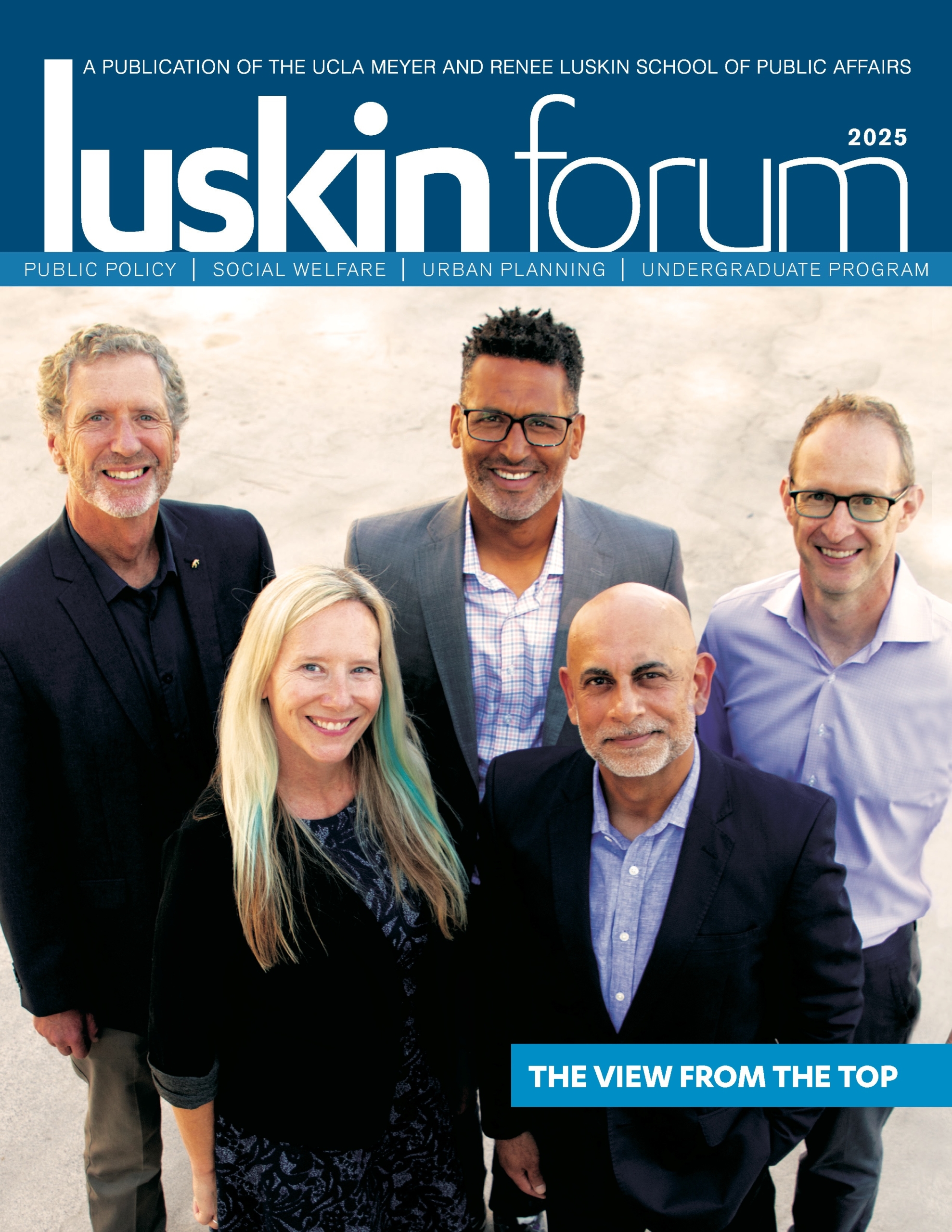For the Media
The UCLA Luskin School of Public Affairs has faculty experts in a wide array of topics. If you’re looking for an expert to comment on issues involving Public Policy, Social Welfare or Urban Planning, please contact us.
For Students
The UCLA Luskin Communications Office curates the Luskin’s Latest blog, which offers an opportunity for student organizations to tell others about their events. Guidelines about that platform are detailed here.
Guidelines for Coverage of Student-Focused News and Events
Events and Activities
If your student organization is hosting a speaker, coordinating a panel discussion or planning an event that is newsworthy, be sure to contact UCLA Luskin Communications:
Kate Shirley
Executive Director of Communications
Office: (310) 206-5252
Email: kshirley@luskin.ucla.edu
The Communications staff will provide recommendations on how the UCLA Luskin website, our social media channels and, perhaps, the UCLA Newsroom site can best be used to tell people about what happened. In certain instances, limited support to get the word out in advance may also be provided.
What Makes a Story Newsworthy?
External Interest
- Generally speaking, the UCLA Luskin Communications staff looks to promote the School to external audiences such as potential students, UCLA alumni, local opinion leaders, and state or national policymakers. Topics of potential interest to news media outlets are also favored.
Community Interaction
- Partnerships with community organizations or nonprofit agencies generally bring with them a built-in audience. Similarly, efforts by UCLA Luskin students have broader appeal if they directly benefit an underserved population or a local community in need. Professional news media are much more likely to pick up on our coverage if it shows students out in the field volunteering and interacting with people beyond the UCLA campus.
Educator Involvement
- The direct involvement of a UCLA Luskin professor may increase the potential newsworthiness of a student-led event, particularly if the event dovetails with the professor’s research efforts.
Cultural, Historical or Political Relevance
- Timeliness is a vital characteristic of a good news story. If you want to reach a broad audience, it’s best to focus on events that relate to a topic that has been in the news within the past couple of months. Stay abreast of local, statewide or nationwide issues, and time your events to occur when the societal or political controversy is still fresh in people’s minds.
What can you do yourself?
- Some stories will be handled entirely by the Communications staff, but student organizers will often be asked to write their own summaries of UCLA Luskin events. A third-person, objective perspective is best. Try for a 150 – 250 word piece that answers the following questions:
- Who was there? What happened?
- When and where did it take place?
- How many people attended?
- What was the format and mood? Did the audience get involved or ask questions?
- What were the key takeaways? (Provide at least a couple of direct quotes.)
- Be sure to include a brief bio of your speaker(s), either within your summary or as a secondary “fact sheet” for reference.
- Also include the names, degrees and expected graduation years of all student organizers. Ideally, this will include a quote about the event from one of those organizers.
- Usually it works best if that quote focuses on the “why” of the story: Why did your organization get involved? Why is this a topic of importance? Why should readers care?
- Be brief but specific. A story that says “a group from Luskin volunteered with the homeless” is much less interesting than one that says “11 Social Welfare students delivered blankets to a homeless encampment on Santa Monica beach as cold weather set in.”
- Provide photos from the event that focus on relevant participants and locational significance. Use a high-quality camera, if possible. Cellphone images may suffice if they are well-lighted, in focus and framed to tell a story at a glance.
- Be wary of selfies and photos that will only make sense to participants. Action shots that show people doing something at an easily identifiable location are preferred.
- Get names and titles for anyone whose face is clearly visible in a photo. Ages and place of residence may be necessary too.
Follow-up
- Act quickly — summaries should be written within 24 hours, while the event is still fresh in your mind. And, for social media, consider supplying a quote or two while the event is still going on.
- Provide the number of a student organizer who can be reached by phone or text message should questions arise during the editing process. (Distribution will normally occur within a day or two.)
- Read the posted story or blog item. Let the Communications staff know ASAP if you spot errors.
Contact Us
Kate Shirley
Executive Director of Communications
(310) 206-5252
kshirley@luskin.ucla.edu
Peaches Chung
Assistant Director of Communications
(310) 794-7639
peaches@luskin.ucla.edu



UCLA Communications
UCLA Office of Media Relations
(310) 825-2585
Visit the UCLA Newsroom